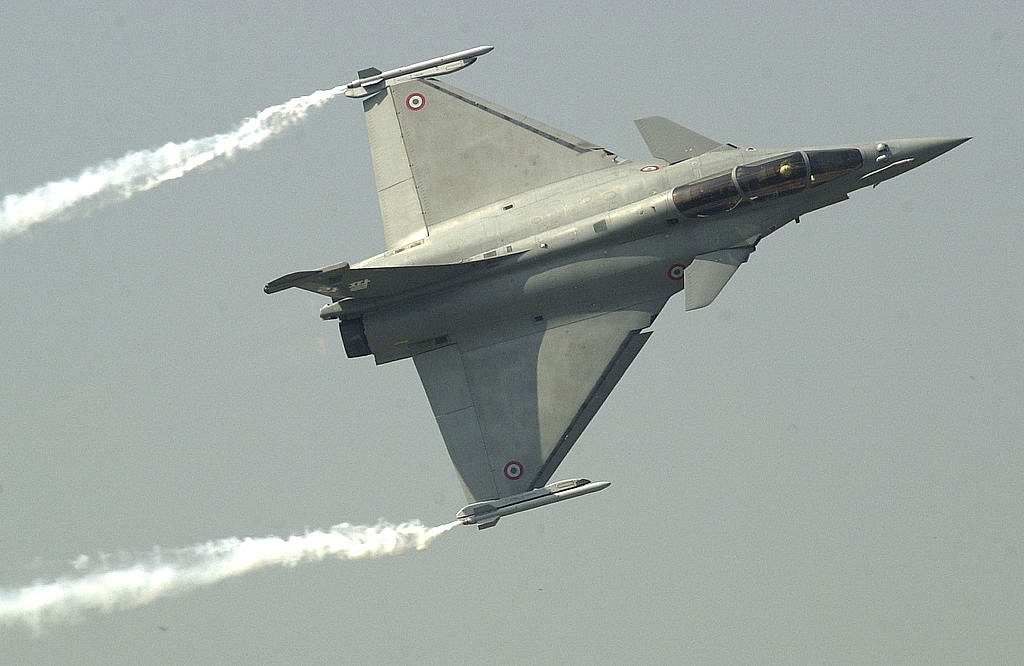Defence
36 Rafales Is Just The Beginning Of A Buying Spree. The Air Force Needs More Than 300.

A French Rafale fighter plane performs roll. (Photo By: EMMANUEL DUNAND/AFP/Getty Images)
With the cabinet finally clearing the acquisition of 36 Rafale jets in a government-to-government deal with France, the nearly two-decade-long Medium Multi-Role Combat Aircraft (MMRCA) saga finally comes to an end.
Former Defence Minister A K Antony, under whose aegis the MMRCA contract was rolled out, had made a fetish out of his clean image, forcing defence procurement to go through impossible contractual requirements and processes. As a result, the largest procurement programme had been inordinately delayed. Even medium- and small-scale purchases were stalled. (See A K Antony’s Antics Cost India A Lot More Than AgustaWestland)
The Indian Air Force (IAF) was no exception to the procurements malaise. The MMRCA procurement had originally been envisioned to help the IAF replace the ageing MiG-21s and to beef up fleet strength until the locally-built Tejas could be produced in greater numbers. When rolling out the bidding process, Antony and the bureaucracy in the Ministry of Defence introduced far too many complications in pricing, long-term support and offset requirements. The processes and trials took so long that at least one vendor (Dassault) managed to bring in a new-generation aircraft to the market (Rafale) because it was no longer building the aircraft it had originally offered (Mirage-2000H).
The IAF has made up for the ‘lost decade’ by buying more of its frontline Su-30MKI aircraft. The original contract with Russia had been for a mere 140 jets with options for follow-ons. As plans stand today, the IAF will acquire 314 Su-30MKIs to replace the ageing MiG-21, MiG-23 and MiG-27 jets. But even these are not likely to be enough. Consider the number of aircraft likely to retire next. Nearly 160 Jaguar bomber aircraft will be up for replacement in the next decade. Even the Royal Air Force, the first operator and the country where Jaguar was built, has retired all its Jaguars. The newest IAF Jaguars joined the IAF early this century and will be up for replacement in the next decade. More than 130 MiG-21s will be up for retirement early next decade. Both the MiG-27s and Mirage-2000Hs will have to be let go around 2025-2030.
So where will the replacement for all these aircraft come from? The IAF is hoping the locally-built Tejas will help, but production is likely to pick up only early next decade. Besides, despite the aircraft’s good performance during flight testing, nobody’s really sure about a line-produced Tejas’ performance and maintainability (not to speak of a good weapons suite).
Given the current fleet strength and a 30-year life cycle assigned for aircraft, the air force will be easily left scrambling for more than 300 fighters in the next two decades. There is hardly any public domain information on how the IAF plans to plug this gap of 300-plus fighters. The air force may well celebrate its newest purchase of 36 jets, but it knows that bigger deals will have to be cut sooner or later.
Introducing ElectionsHQ + 50 Ground Reports Project
The 2024 elections might seem easy to guess, but there are some important questions that shouldn't be missed.
Do freebies still sway voters? Do people prioritise infrastructure when voting? How will Punjab vote?
The answers to these questions provide great insights into where we, as a country, are headed in the years to come.
Swarajya is starting a project with an aim to do 50 solid ground stories and a smart commentary service on WhatsApp, a one-of-a-kind. We'd love your support during this election season.
Click below to contribute.
Latest